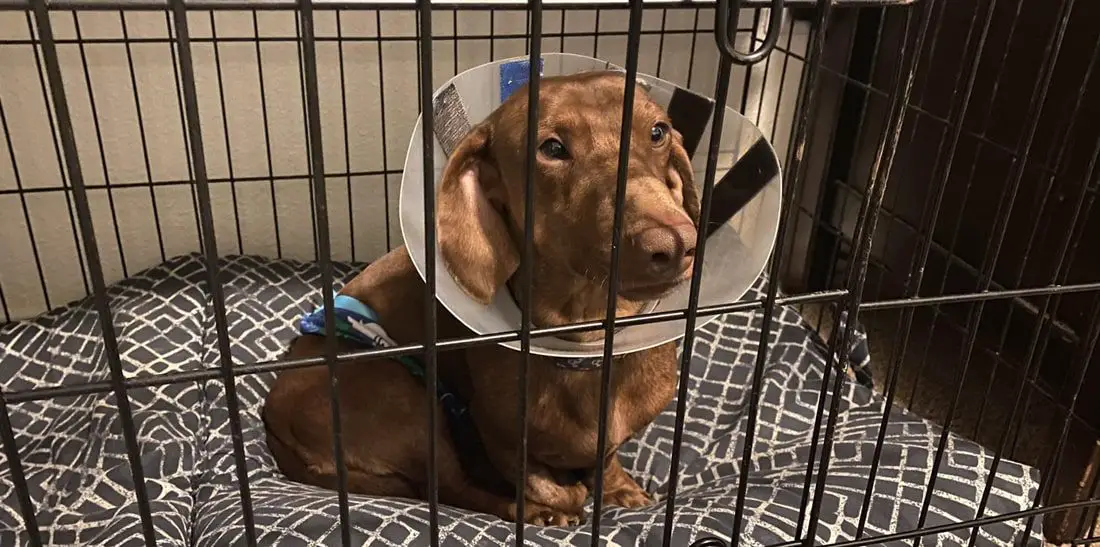Enemas are a type of medical procedure used to introduce liquids into the rectum in order to flush out the intestinal tract.
This can be beneficial for dogs who are suffering from constipation, impaction, or other bowel issues.
However, giving a dog an enema can also have certain side effects that pet owners should be aware of.
In this article, we will discuss the potential side effects of giving a dog an enema and how to minimize the risks associated with an enema.
Side Effects of Giving Dog an Enema
1. Vomiting

An enema solution is a liquid that is inserted into the rectum and colon. This solution can irritate the lining of the intestinal tract and stimulate peristalsis, which is the wave-like contractions of the intestines that help move material through it.
The irritation caused by an enema solution can create an uncomfortable feeling in some dogs, resulting in vomiting as a way to expel the irritating substance.
In addition, stimulating peristalsis too quickly or forcefully may cause nausea and vomiting in some dogs.
Furthermore, depending on what type of enema solution is used, it may contain ingredients such as laxatives or oils that are not easily digested by dogs and can cause additional gastrointestinal upset if not fully removed from their system.
Side Effects of Giving Dog an Enema
2. Diarrhea
Diarrhea after an enema is a common side effect in dogs. This usually occurs because the enema can be irritating to the intestinal lining, leading to inflammation and diarrhea.
It can also be caused by an allergic reaction to the solution used during the enema. Or, it could be a sign of a more serious underlying condition such as infection or blockage.
If your dog has had an enema and subsequently experiences diarrhea that does not go away within 24 hours, it’s important to seek veterinary attention to ensure proper diagnosis and treatment.
(See also: Can Dogs Experience Diarrhea After An Enema?)
Side Effects of Giving Dog an Enema
3. Dehydration
Enemas can cause dehydration in dogs when a dog is given too much of an enema or does not absorb all the water during the procedure.
When administered correctly, large volumes of fluid are injected into the rectum and travel through the intestines to help flush out waste materials and expel built-up gas.
If too much fluid is used or if it is not fully absorbed by the body, then some of it will be expelled back out with feces along with essential bodily fluids such as electrolytes that are needed for proper hydration.
In addition, some medications used during enemas can act as diuretics which further increase water loss through urination.
Therefore, it is important to give your dog only the necessary amount of fluids. Monitor them closely for signs of dehydration following an enema.
If your pet appears to be dehydrated, contact your veterinarian immediately.
Side Effects of Giving Dog an Enema
4. Rectal irritation
Enemas can cause rectal irritation in some dogs because they introduce a foreign substance into the body.
The enema solution may be irritating to the rectum, and sometimes bacteria that get introduced to the enema fluid can cause inflammation in the area.
Enemas can also stretch the walls of the rectum and disrupt its normal flora, causing inflammation.
Additionally, if too much pressure is applied during an enema or if it is done too quickly, this can cause discomfort or even injury to the dog’s sensitive anal area.
It is important to follow instructions carefully when administering an enema to minimize any potential irritation or injury.
It is always beneficial to speak with your veterinarian before attempting an enema on your own. They can provide guidance and support.
Side Effects of Giving Dog an Enema
5. Bleeding
Some dogs may bleed after an enema due to rectal trauma from the insertion of the nozzle.
If the nozzle is inserted too far, it can cause lacerations in the delicate lining of the rectum, which may result in bleeding.
Additionally, if a dog has an anal gland infection, this can lead to inflammation and irritation that can cause bleeding.
In order for a dog to get relief from constipation and other digestive issues, enemas are sometimes necessary.
However, it is important to make sure that they are administered properly by a knowledgeable veterinarian or groomer. Experience is required in administering enemas.
With proper technique, there should be minimal risk of rectal trauma leading to bleeding.
Side Effects of Giving Dog an Enema
6. Infection
An enema can sometimes cause an infection in dogs because it introduces bacteria and other organisms directly into the colon.
The bacteria can spread to other parts of the body if not properly treated, leading to an infection.
Additionally, some types of enemas contain ingredients that may be toxic or irritating to a dog’s system, resulting in an adverse reaction that could also lead to an infection.
To reduce the risk of developing an infection after receiving an enema, it is important for pet owners to follow all instructions provided by their vet regarding proper administration and post-care treatment.
It is also recommended that dogs are monitored closely after receiving any type of enema. Look for signs of discomfort or adverse reactions.
Side Effects of Giving Dog an Enema
7. Electrolyte imbalances
Electrolyte imbalances can occur after an enema because of the introduction of large amounts of fluid into the body.
This can cause imbalances in electrolytes such as sodium, potassium, and chloride in the blood.
Electrolytes are crucial to many bodily functions, so when their levels become too high or too low it can adversely affect a dog’s health.
An imbalance could lead to dehydration, muscle cramps, seizures or even death if not corrected quickly.
Therefore, it is important for pet owners to monitor their dogs after an enema and contact a veterinarian if they suspect any signs of an electrolyte imbalance.
Treatment usually involves administering fluids intravenously and monitoring the electrolyte levels until they return to normal. It may also be necessary to supplement electrolytes orally.
(See more: How To Prepare Your Dog And Perform An Enema)
In Conclusion
While enema is very beneficial for dogs, they can have some side effects.
We can never know how the dog will react and how the enema will be carried out.
It is important to always consult your veterinarian if you notice that something is off with your dog.






Leave a Reply